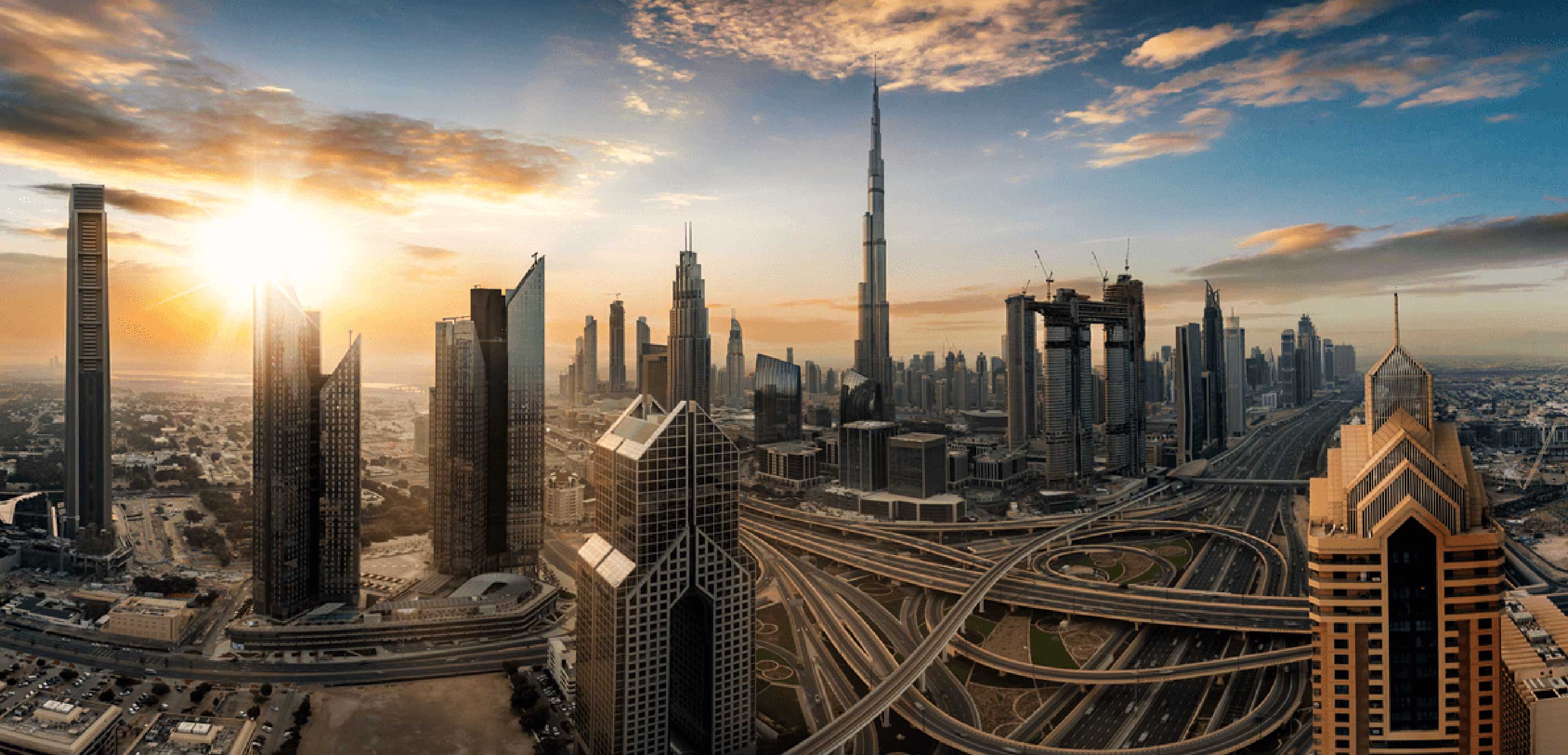- Article

- Infrastructure and Sustainable Finance
- Transition to Net Zero
- Sustainable Supply Chain
- The Future of Energy
UAE Sustainability Built Environment Blueprint
In 2023 the leadership of the Emirates Green Building Council (EGBC) and the UN Climate Change High-Level Champion COP28, created the ‘Developers’ Leaders Group UAE’ with the aim to map challenges and key enablers of unlocking greater climate action for the built environment in the UAE.
With HSBC support, the first report was crafted to summarise the key findings of the year long engagement and work of the group as well to map out key opportunities for intervention to each of the main enablers identified.
Key takeaways
- The UAE’s Third Update of its Second Nationally Determined Contribution submitted in 2023 to the UNFCCC states that the building sector was responsible for 28 per cent of greenhouse gas emissions in the UAE as of 2019.
- At the same time, the built environment represents an opportunity for emissions reductions of 81.4 per cent by 2030, making it a critical sector for the UAE to meet its net zero targets for 2050 under the Paris Agreement.
- The report identified five (5) main key opportunities for intervention to unlock climate action for the built environment in the UAE – Policies and regulation, Building Materials and Systems, Finance, Data, and Skills.
- Key findings and recommendations include harmonisation of green building policy across emirates in the UAE, increasing awareness off green materials to address embodied emissions, governmental support for promoting green finance and availability of performance data.
- This in turn can support the adoption of wider GCC level minimum building performance criteria in order to unlock greater economies of scale for green manufacturing, enhanced skills of local labour and contractors across the region.
UAE Sustainability Built Environment Blueprint
Overview
The report further maps out the key opportunities for intervention related to each of the main enablers identified and presents some recommendations for further analysis:
- Policies and Regulations: Currently there are four (4) building codes and regulations that impact green buildings in the UAE, these are: national regulations, local regulations at an emirate level, voluntary certification schemes and high-ambition building guidelines by leading developers.
Engagement highlighted that across these sectors, three areas of intervention were highlighted as cornerstone policies to address – Building Codes, Energy-related policies & Building Performance Requirements acting as key levers to address policy and regulatory change requirements. - Building Materials and Systems: When discussion building materials and systems, the report identified two key aspects to consider relevant in the UAE. Operational emissions to power and cool / head buildings and Embodied emissions, those generated in the construction/materials of the development.
Today building materials and systems specifications are not reflecting market availability and readiness of more sustainable alternatives and the report identified a lack of awareness as the main driver. - Access to Green Finance: the increased interest and availability of green finance represents an opportunity for the building sector to access wider options for financing. However to do so, developers would have to work on ensuring new developments are built to high sustainability standards and work on decarbonising their asset portfolio to align with banking decarbonisation commitments. According to the stakeholder engagement 60% identified the lack of finance and green finance as the biggest challenge to accessing funds for sustainable projects, whilst nearly half of them highlighted that green finance was too complex or unclear.
- Data: data availability presents a challenge on multiple fronts, from building materials, systems and unlocking green finance and is an enabler for much of the challenges identified in the report. In order to address this, there is opportunity to perform benchmarking for building performance and make the information publicly available, and utility providers could provide energy information and benchmarking activities to help address this area.
What does this mean for corporates?
Key recommendations for industry include:
- Adopting in-house high quality building standards is an efficient internal method for setting standards for new sustainable building developments, which other stakeholder can use, i.e. Finance & material suppliers to grow the stock of sustainably built developments.
- A lack of awareness is a main driver for not adopting green building materials, corporates should seek advice on alternative materials and actively seek out new technologies and materials at trade shows, industry groups and peers to address sustainable solutions.
- Green finance whilst sometimes seen as complex is increasingly standardising and active engagement with banks can help dismiss the uncertainty. Additionally setting internal green financing frameworks or building standards will help banks identify opportunities for financing easily, as well as adoption of well know certification schemes.
- Governments, utility providers should provide building performance data and maintain registers of building performance for industry to use. Whilst corporates can ensure they are optimising their building performance and identifying retrofit opportunities which will provide performance data whilst going through the process.
UAE Sustainability Built Environment Blueprint
Today we finance a number of industries that significantly contribute to greenhouse gas emissions. We have a strategy to help our customers to reduce their emissions and to reduce our own. Find out more: https://www.hsbc.com/who-we-are/our-climate-strategy.



